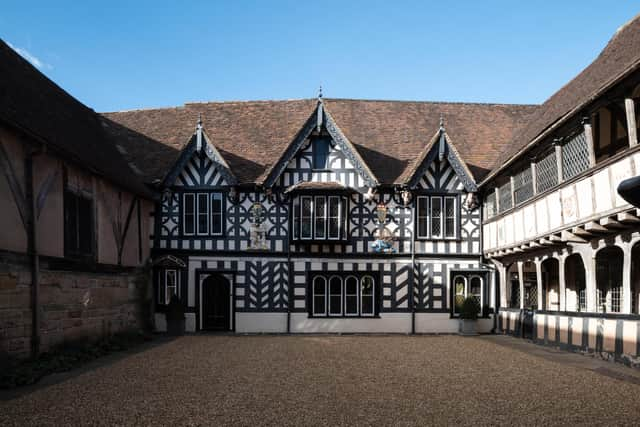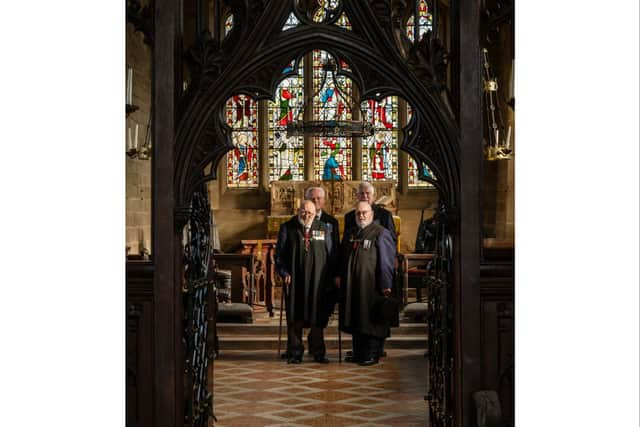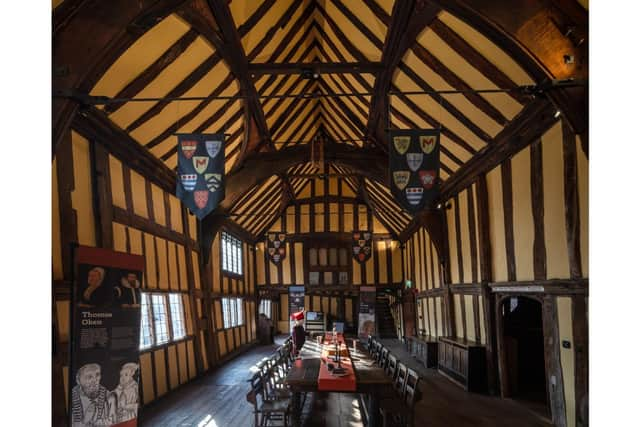Warwick’s unique medieval Lord Leycester Hospital welcomes bumper numbers following £4.5m revamp
and live on Freeview channel 276
One of the country’s most significant Medieval sites, which is located in Warwick, has welcomed bumper visitors in the three months since it reopened its doors following a £4.5m renovation.
The Lord Leycester in High Street reopened to the public in August following an 18-month restoration project and since then has welcomed 10,000 people through its doors, all keen to enjoy some never-seen-before parts of the 700-year-old buildings, the café-shop, and revamped visitor experience.
Advertisement
Hide AdAdvertisement
Hide Ad

The repairs and renovations have marked a new chapter for the site, which has been home to deserving military veterans known as the Brethren since Elizabethan times, making it a unique site in both community and architectural terms.
The renovation project has seen The Master’s House and the Medieval wall at the Lord Leycester opened to visitors for the first time in its history, with an overall 23 per cent increase in how much of the historic site’s areas is accessible to the public.
The improvements also saw the creation of new exhibition areas and an enlarged visitor attraction area including a new reception, gift shop and a café located in the Great Hall, as well as external repairs of the almshouse that form the homes of the Brethren who currently live at the Lord Leycester.
The groundbreaking work, funded by the NLHF (National Lottery Heritage Fund) in partnership with other national and local community donors, and led by architects Donald Insall Associates, also saw intricate and sensitive upgrade works, enabling level access throughout public areas and underfloor heating - all aimed at improving the visitor experience.
Advertisement
Hide AdAdvertisement
Hide Ad

Dr Heidi L Meyer, Master of the Lord Leycester, said: “Critical for us as a charity that relies on heritage visitor footfall to pay our bills, is offering all of our visitors a comfortable and interesting experience so they will come back and recommend us to their friends.
"We think we have done that with this project.”
Matthew Vaughan, practice director at Donald Insall Associates, said: “Lord Leycester is a cluster of buildings of incredible importance, not only regionally, but nationally, with a connection to compelling historical figures from Elizabeth I to Oscar Wilde.
"Working with our client and the consultant team we are delighted to help secure its future and bring its many treasures and fascinating stories fully to light.”


The changes to the project and subsequent increased footfall, means the Lord Leycester had a better chance of securing its future for more years to come, allowing it to maintain a centuries-old tradition of hospitality, service and support for its Brethren.
Advertisement
Hide AdAdvertisement
Hide Ad“The endurance of Lord Leycester’s Hospital and its traditions, both as a collection of buildings and a community of Brethren is, by any measure, remarkable,” added Matthew Vaughan.
“From the point of view of a conservation architect, it is especially satisfying to have a building thrive to this day in its originally intended community use.”
Dr Meyer added: “But the make and break of this project is footfall… how many people choose to pay to visit us and how many diverse audiences we can attract to this extraordinary site – the next few years will tell.
"Fundamentally we need revenue coming in to undertake annual maintenance to protect these precious sites for the centuries ahead of us.”
